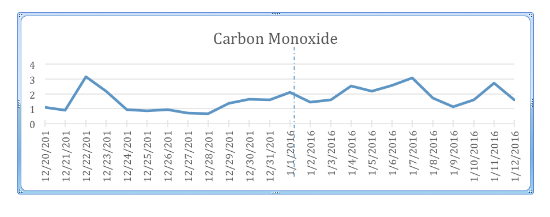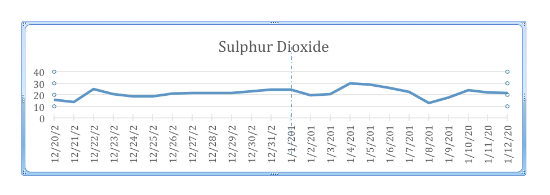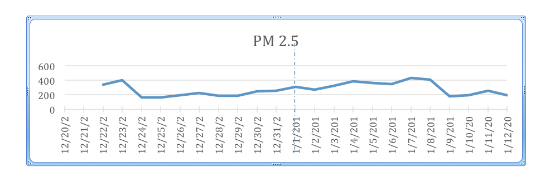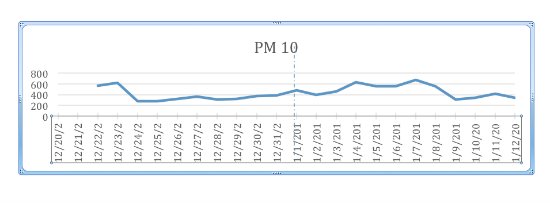Content from the Brookings Institution India Center is now archived. After seven years of an impactful partnership, as of September 11, 2020, Brookings India is now the Centre for Social and Economic Progress, an independent public policy institution based in India.
The Delhi government’s two-week-long odd-even rule ended on 15 January, with Chief Minister Arvind Kejriwal announcing that the plan will return in a revised form in the near future. There have been several commentaries and opinions on this policy in the national and local media, while ordinary citizens have enjoyed some side benefits of the policy such as smoother traffic and less congested roads. But smooth traffic was not the driving objective of the odd-even rule in Delhi. It was implemented with the single focus of reducing the pollution level in Delhi, which overtook Beijing as the world’s most polluted capital city as estimated by the World Health Organization
Private vehicles might not be the leading cause of pollution in the city air. There are other scientific studies that corroborate our findings…
To objectively gauge the impact of this rule on pollution level in the city, we analyse data from all the eight monitoring stations throughout Delhi, collected by the Central Pollution Control Board (CPCB), over 24 days. The CPCB collects real time air-quality data with measures for pollutants such as carbon monoxide, sulphur dioxide, nitrogen dioxide, particulate matter 2.5 and particulate matter 10. Our analysis is to measure any systematic change in the level of each pollutant with implementation of the odd-even policy in the city. We study the average daily level for each pollutant within a well defined narrow window before and after the rule was implemented. Very specifically, we compare the pollution levels in the city 12 days before the experiment and 12 days afterwards.
This is a simple statistical exercise which presumes that the different processes through which pollution is produced in Delhi remains the same before and after the odd-even experiment, which is reasonable. Our analysis assumes that the various factors that contribute to the level of pollution in the city remains the same in the last 12 days of December 2015 as they do in the first 12 days of January 2016. This is a classic natural experiment setting that we exploit in empirical economic analysis to assess impact of an intervention. People in Delhi would have re-optimised their lives around this new rule and altered their consumption patterns. Through this analysis, therefore, we are able to pick up the overall effect of this odd-even rule on pollution levels in the city. This is not picking up the impact on pollution of fewer cars on the roads alone but also several other partial effects such as more buses plying or metro rails running in the city.
Instead of rushing to declare the success of the odd-even policy, the Delhi government must accept that this has failed to reduce pollution levels in the city.
There are certain contributing factors like wind speed and temperatures at the monitoring stations that directly affect the pollution level. These factors, however, are measurable and therefore easy to control in our analysis. So our results are not confounded by wind speed and temperature around the city.
The basic result of our regression analysis indicates that there is no obvious reduction in the level of any of the pollutants measured by the CPCB in Delhi after the odd-even rule was implemented.
At the first instance, this result would strike as being quite puzzling, since the number of private cars on Delhi roads have been halved since the plan came into effect. Yet, on deeper thought, these results indicate that perhaps the Delhi government is barking up the wrong tree. Private vehicles might not be the leading cause of pollution in the city air. There are other scientific studies that corroborate our findings, most notably the research from IIT Kanpur which points to other major sources of pollution such as transit freight traffic, agricultural crop burning, municipal solid waste burning, road dust and construction dust.

mg/m³

µg/m³

µg/m³

µg/m³

µg/m³
Citizens of Delhi have been extremely pliant to the demands of the Delhi government which has lead to a successful implementation of the odd-even rule in the city. This is particularly commendable given the absence of sufficient public transport in the city, which implies that the costs of implementing this rule in the spirit of greater public good have been largely private in nature. People accepted the added costs because it held a hope for improving the air quality in the city and therefore their own health. The citizens are determined to support any honest measure of the state government to address the severe problem of air pollution and therefore of rising respiratory and cardiovascular diseases in the city.
The government, on its part, must seize this goodwill and reciprocate by rapidly widening the experimentation to other causes of pollution. For this, it is important to approach the problem scientifically. Instead of rushing to declare the success of the odd-even policy, the Delhi government must accept that this has failed to reduce pollution levels in the city. It must, in all honesty, aim beyond the low hanging fruits and extend the policy of experimentation to other major sources of pollution.
This article first appeared in The Huffington Post on February 09, 2016. Like other products of the Brookings Institution India Center, this is intended to contribute to discussion and stimulate debate on important issues. The views are those of the author.



Commentary
Op-edThe Data Is Unambiguous: The Odd-Even Policy Failed To Lower Pollution In Delhi
The Huffington Post
February 9, 2016